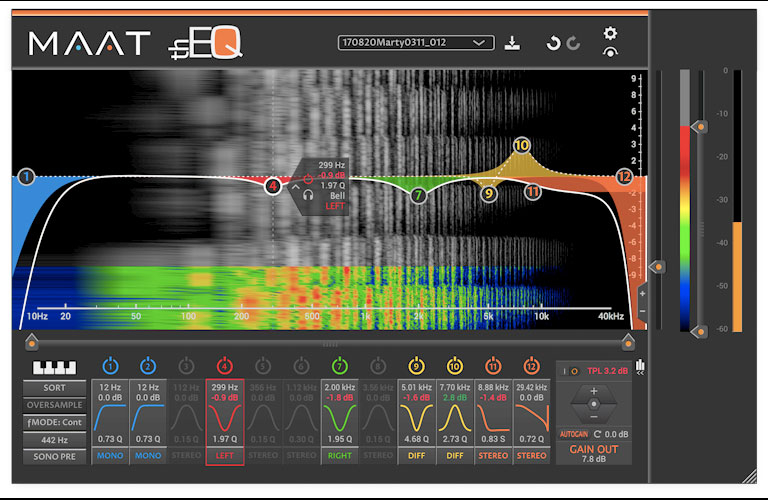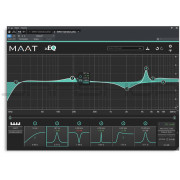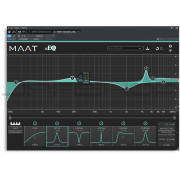You're currently on:
thEQorange
Linear Phase Without Compromise
When purity is paramount.
A remedial linear phase EQ with unparalleled clarity. For mastering ears, and other discerning engineers.
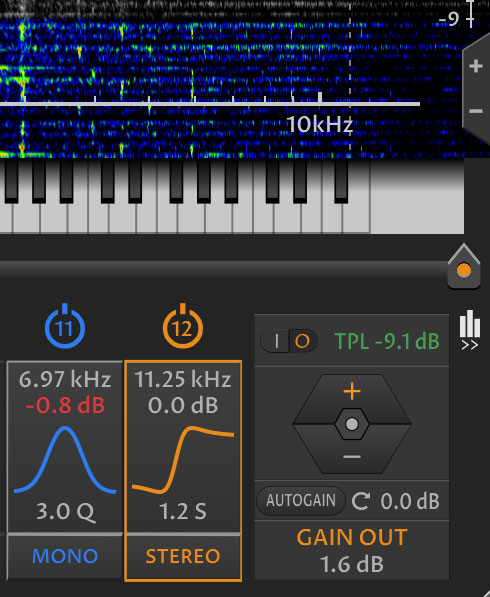
A Dream Come True
Many mastering engineers, including MAAT founder Friedemann Tischmeyer, were fans of Algorithmix’s legendary original Linear Phase PEQ Orange. Unfortunately, the Algorithmix EQs were available only as 32 bit VSTs for PC and our workstations and our industry has evolved since then. Tischmeyer’s students repeatedly asked for alternatives, which caused him to scan the market for other high class EQs. Colleague Bob Katz recommended EQuilibrium, an insanely versatile tool, which Tischmeyer used for teaching. However, he could not find a satisfying alternative which would take the place of his original PEQ Orange.
The idea was born to reissue this masterpiece and make it available as 64 bit in all common formats and for macOS. An agreement with Algorithmix was made, and MAAT started up in mid–2017. Algorithmix fans heard of that and reached out to us, saying “…just redo it as it is; no extras, no nothing. We just want to have it back in 64 bit and for Mac.” That was encouraging. As a power user, Tischmeyer had some other ideas in mind regarding the UI. He wanted to make it more flexible and faster to use because there is no other tool in the mastering chain an engineer spends so much setup time with. The result? “I think we have achieved that. The UI allows super fast setup and has a number of unique features which help to do so: The positive & negative Contribution function including absolute difference, the adjustable sonogram which makes detecting energy spots you want to clean up easy, and the possibility to play a note on the piano you have in your head and just push the respective frequency to the active band section with one right click are just a few of the new features. What I like too is that I have an overview of all Sections as opposed to just one Section at a time.” In order to not end up with a strange Section order when using many filters, we also added the SORT button so your Sections are always in ascending order.
Unobtrusive Power
thEQorange’s powerful features hide behind its clean and simple UI. Eye candy is great for newbies, but thEQo isn’t typical. It packs all the advanced features you need into one resizable window that’s easy on the eyes. Not only does the UI “get out of the way” so you can be more productive, we’ve incorporated industry–first features that speed your workflow, neatly packaged to make thEQorange easy and intuitive to use. An example is the ability to freely assign Sections to either stereo [left/right] or sum/difference [L+R/L-R] at the same time.
Subtle Functionality
We’ve brought pristine fidelity and innovative user interface design to what used to be an unremarkable product category. With four monitoring modes, an ergonomic and uncluttered interface, intelligent monitor auto–gain plus crazy good sound, you’ve got to try thEQorange for yourself.
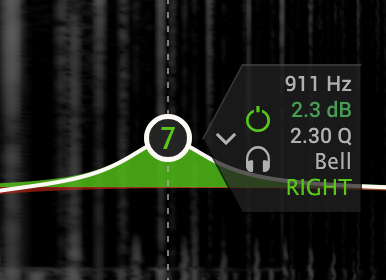
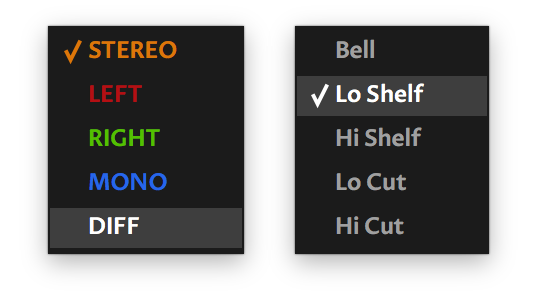
Better By Design
Whether you’re looking for surgically precise repair, colorless correction, or simply baggage–free spectral contouring, our proprietary, precision algorithm delivers on the promise of linear phase correction. For clean up and control duties, bring the power and purity of thEQorange to bear for all your surgical equalizing tasks.
My Go To
Tischmeyer says: “The Algorithmix Orange was an essential part of my chain for more than 15 years. It was my ‘to go’ tool when I needed to remove annoying frequencies and resonances or when the midrange was simply cluttered by too many events with too much energy. The same applies to our thEQorange. The magic of thEQo is that I can remove frequencies without having the feel that I have applied a drastic EQ. I simply don’t hear the EQ. The result sounds natural, and suddenly the stereo image opens up — not as a side effect of the EQ but rather more as a result of creating space so that everything falls into the right place instead of fighting against each other. Furthermore, I use it as my preferred low cut to go. Yes, despite it is being a linear phase EQ. Most mastering engineers would not do that because of the fear of pre–ringing artifacts. For me, it is always a question of trade offs when it comes to the choice of a proper low cut in mastering. A minimal phase (IIR or Infinite Impulse Response) EQ comes with a high risk of destroying the master in the time domain due to its phase behavior. This can create a kind of transient smearing because different frequency components of the same transient event do not appear at the same time any longer (known as Group Delay). This could be a very tiny delay but enough to create an unnatural sense which is why I tend to avoid minimal phase EQs for low cutting. Also, a first order 6 dB per octave low cut is no alternative because it just does an inefficient job. On the other hand, a linear phase equalizer comes with the risk of smearing the transient with pre-ringing. However, with reasonable settings of the low cut, like a Q of 0.78 at 25 Hz, the ringing is so irrelevant and unnoticeable that I achieve a far tighter and apparently time correct result. This is why we say that thEQorange has no smearing effect on transients, if it is applied with real world, sensible settings so that pre-ringing is kept to a minimum.
In many cases, when I compensate for too much low end in a mix, the kick suddenly goes from distracting low end artifacts to appearing more punchy and sometimes seeming to have more bass which is not logical but subjectively so since there’s less clutter. I can just explain it another way: It seems like more bass because the bass has a legitimate ‘pocket.’ It also translates better on the monitor system because it is delivered as a correct, time–aligned pulse together with the high frequency components.”
If One is Good & Two is Better…
People have asked us why we haven’t included alternative modes like minimal phase and all the other options you find in competing products. That’s what thEQblue is for, a whole box of “colors”! As a mastering engineer, you need specialized tools which do a particular job in the fastest and best possible manner.
thEQorange is a perfect example of just such a tool. It offers everything you need to remove DC contamination, declutter a messed up mix, and compensate for some “interesting” production choices in the low end. We mastering engineers certainly receive such challenges more often as we would want. To arrive quickly at an optimal solution, we intentionally didn’t include parameter settings that are more hindrance than helpful. An example is the lack of choice between the whole range of windowing options like triangular, Blackman or Hamming, because it simply won’t improve your deliverable. Including tweaky options won’t give you better results.
thEQorange was tuned by Dr.s Musialik and Hatje, who have already worked through an extensive refinement process. When asked about this, Musialik stated that “…the optimization and refinement of our algorithms was a very long, tedious and iterative procedure between research, development and feedback from experienced mastering engineers. Unfortunately, in high res audio, not everything is measurable or provable by numbers. This is especially true for the measurement of dynamic behavior and reactions to real–world, complex signals.” Musialik emphasizes that “There is no ‘best’ audio tool for everybody.” His advice: Perform your own listening tests, then select which additions you want to include in your kit.
Vive La Différence
What are the differences between thEQorange and thEQred? We recommend thEQo for “surgical” work, mostly negative gain EQs to address issues in a mix during mastering when material needs to be “fixed” because it has a problem. On the other hand, thEQred is best at aesthetic work, artistic equalization that makes material sound better without affecting the time domain. As with thEQorange and both being linear phase, thEQred doesn’t leave a signature on the sound the way thEQblue does. Because it’s minimum phase not linear phase, thEQblue is for when you would reach for an analog EQ, but with ultimate fidelity that can’t be achieved with analog. So, the three of them together replace all EQ use cases, unless you want distortion, and thEQblue with its 12 Architectures replaces all analog–style EQs one might want.
thEQred also has VariSlope, something we think is unique in the industry. So, in keeping with that aesthetically minded approach, with thEQred, you can do really broad or really gentle lifts or suppression, as well as all the “normal” stuff you’d expect from a fixed–order EQ.
If you can afford only one of our thEQ products, it’s probably best to go with thEQblue. Its versatility is unsurpassed. If, however, you work with a fair amount of acoustically recorded performances and higher fidelity recordings, then over time you will find both thEQorange and thEQred indispensable. Specifically for that, we have the annual Linear Phase subscription, which includes both thEQred and thEQorange.
Bob Katz — Digital Domain reviewing in Resolution Magazine
“Listening and Use Tests
…I’ve measured the MAAT HP (high pass) slope as 24dB/octave at Q 0.72, and there’s zero ripple in the passband, a sign of good, clean coding. This steep slope is extremely effective at reducing mud yet staying below the fundamentals of bass and bass drum.
I had always avoided using steep high pass filters in LP because of my experience with less well-specified Linear Phase plug-ins, which performed poorly at low frequencies. I decided to try high pass in LP again with thEQorange EQ. In a rock mix with muddy, heavy bass and bass drum, an MP (minimum phase) equaliser’s steep high pass sounded incoherent, but with the MAAT, the bass instrument retained impressive body and punch. I was so astonished that I had to confirm the two equalisers had identical frequency response — yes, all the audible problems were due to time domain anomalies. Now I’m going to try LP during more projects.
Linear Phase Royalty
thEQorange EQ is a premium EQ, with a premium price and premium features, sounding transparent, solid, and clean to me. Years ago, the Algorithmix EQs were king of the Linear Phase Equalisers — nothing available at the time could touch them — but today there are alternative LP EQ plug-ins available…(That said) I haven’t found any other LP equalisers of similar quality, and I’d certainly be happy to use thEQorange in my processing chain.
PROS: Very clean, pure and transparent. Natural-sounding. High frequency boosts without image flattening. Very “tight” high pass filter. Precise filter shapes.
CONS: Expensive. No A/B comparison, this will be added in a future revision. Possible pre-echo artefacts.” (Note that A/B comparison was added in version 2, and all artifacts are well below -120dBFS)
Features
- Fully parametric linear phase EQ
- Free of group delay
- Exclusive Contribution Control
- Optional live spectrogram
- AutoGain for effortless A/B comparisons
- Variable resonant ƒ tunings for common Western scales
- Inbuilt tone generator for quick spectral navigation
Supporting
- AAX Native (Pro Tools 10.3.10 and newer), AU, VST 2, VST 3
- Sample rates from 44.1 to 384 kHz
- Verified by pluginval, passing with a score of 10 (the highest strictness level)
VST
VST PlugIn Interface Technology by Steinberg Media Technologies GmbH
License
- Perpetual: One–Time Buyout
- Subscription: Annual
Requirements
- macOS 10.9 and newer, 64 bit only
- Windows 7 and newer, 32 & 64 bit
- OpenGL 3.2 or newer
| Variant | 1 |










